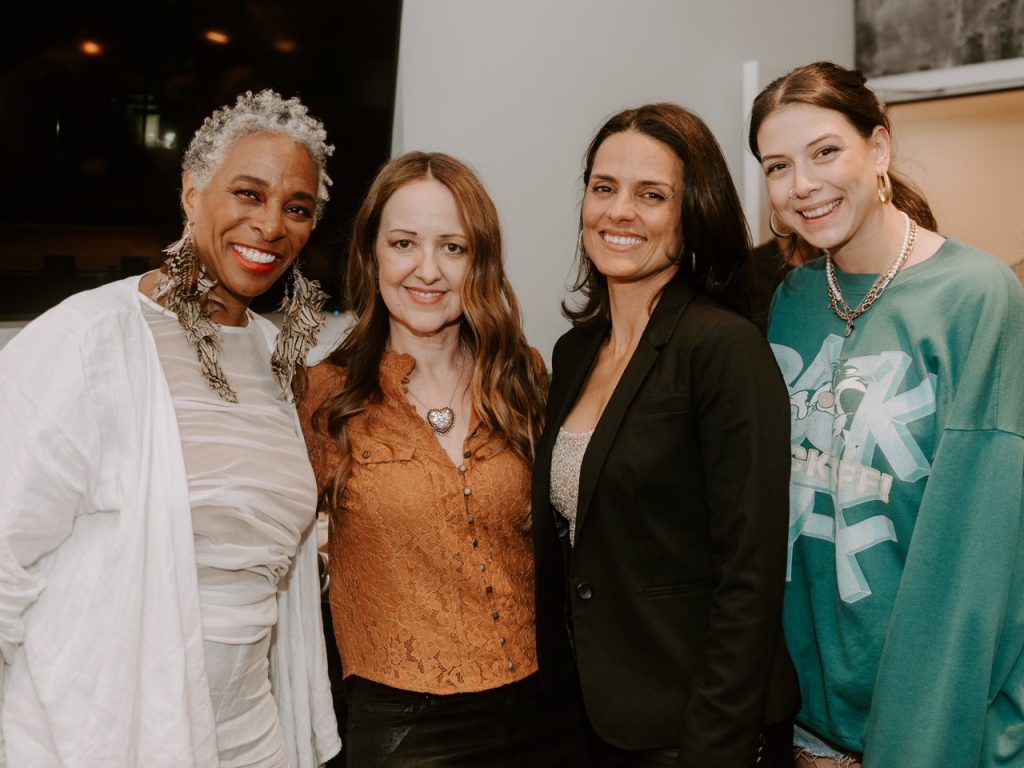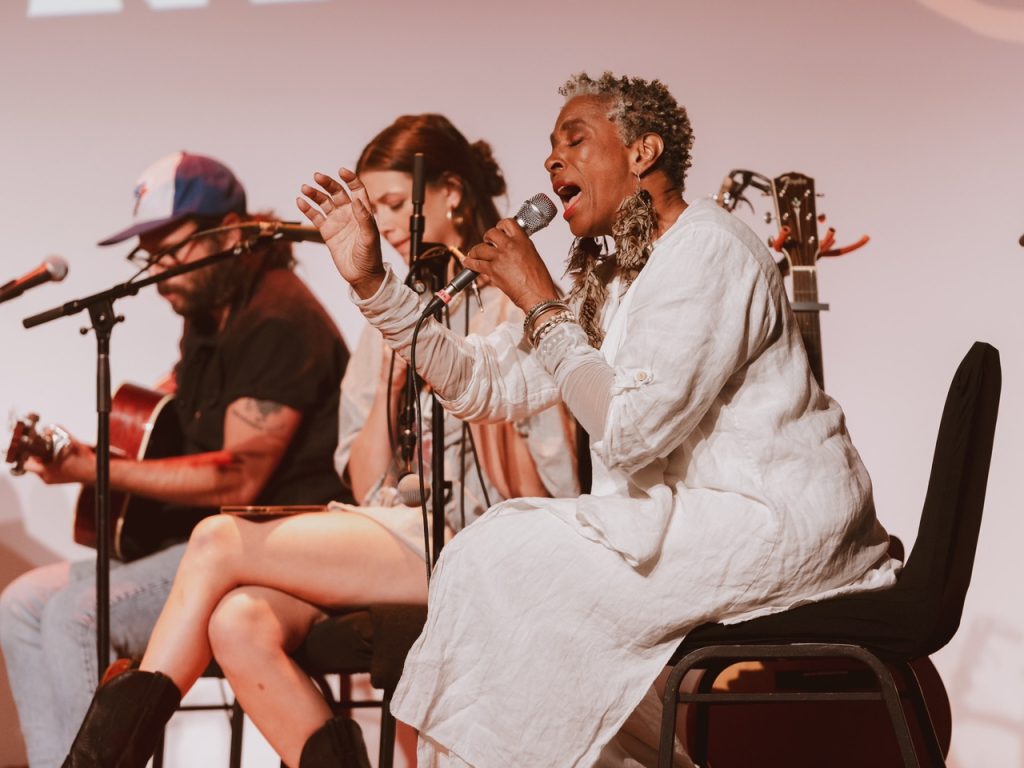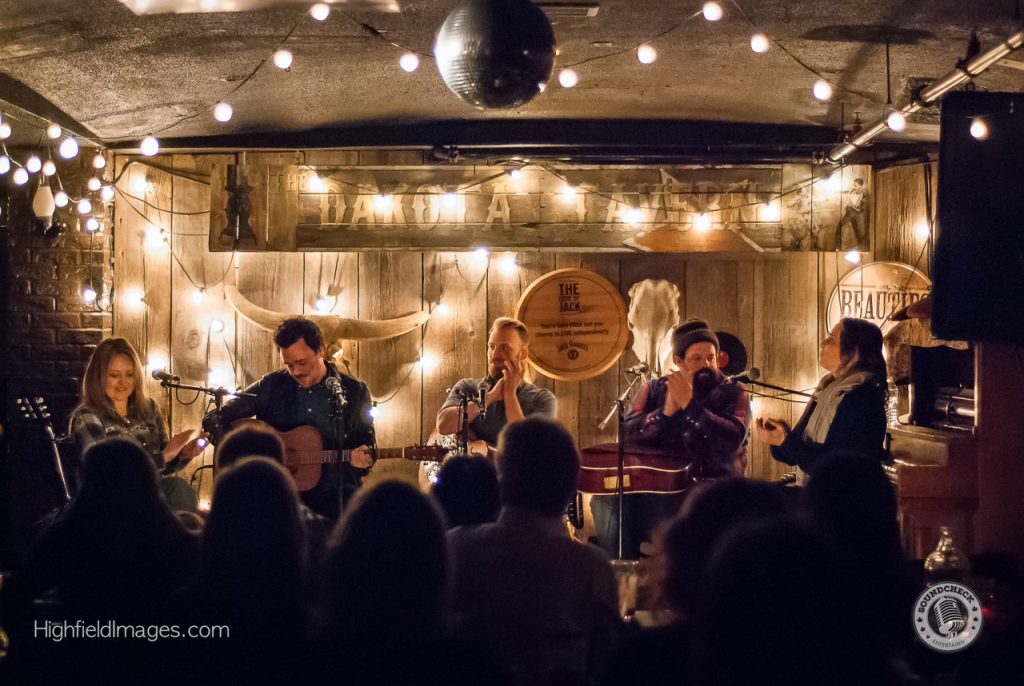In addition to working as a singer-songwriter, a song lyrics instructor at Seneca College, and the Associate Director of Public Engagement and Strategy at the Canadian Musical Reproduction Rights Agency (CMRRA), Andrea England serves the Canadian music community as founder, host, and curator of the songwriter series Four Chords and The Truth.
The quarterly song-circle series began at the Dakota Tavern in downtown Toronto, in 2015; by 2017, tickets were selling out before the lineup was even announced. The show features both established and emerging artists in a multi-genre format, and England is protective of it, and all the performers, regardless of their level of experience. “I need to make sure that the songs stand up; that the person is welcomed into the fold; and that it’s an entirely professional event the whole time,” she says.
After a pandemic-induced hiatus, FCATT (the event’s occasional acronym) returned on May 25, 2023, at a new venue: the TD Music Hall at Allied Music Centre, within the new Massey Hall building in downtown Toronto. Seeing the Four Chords and the Truth logo on such a grand stage was a surreal experience for England, who momentarily wondered if the intimacy of the show would be lost in a 500-capacity theatre. Any doubts were quelled, however, by the enthusiasm of the audience, and the commitment of the performers. “They all came willing to be vulnerable, and to really share their truths – and to trust me, the audience, and each other,” England says. “It was a beautiful, humble group.”
The evening featured Julian Taylor, Liz Rodrigues (accompanied by frequent collaborator James Bryan), Adam Baldwin, and Robyn Ottolini, all of whom turned in stellar performances. There were also several guests: the first emerging songwriter in the TikTok seat, Adrian Mitchell; new Universal Music Group Canada signing, Owen Riegling; and guest vocalist Shakura S’Aida who led the performers in a rendition of Gordon Lightfoot’s “If You Could Read My Mind.” Performing a cover song is a break from the FCATT tradition of all-originals; however, it allowed everyone to acknowledge the loss felt by Lightfoot’s recent passing. England says, “We sang it together as a thank you.” (At the gig, England even mentioned that she once met Lightfoot, and he was aware of FCATT.)
She both honours and breaks tradition through the “in-the-semi-round” format of her show, in which performers face the audience, as opposed to the “in the round” tradition made famous at The Bluebird Café – Nashville’s legendary venue, where songwriters face each other as they perform. Four Chords and the Truth came full circle when England brought the show to Nashville, and fittingly, then Nashville came to her Toronto show (at least in spirit) when Donovan Woods led England and fellow songwriters Morgan Cameron Ross, Joey Landreth, and Rose Cousins in a rendition of “Leaving Nashville,” Woods’ co-write with Abe Stoklasa. England says it was a perfect way to end a night devoted to songwriters.
England has big plans for Four Chords and the Truth, including a seven-night cruise through Austria, Germany, Hungary, and Slovakia happening in the Fall of 2024. Titled, The Danube Riverboat Confessions, the cruise promises a sharing of songs you already know, coupled with stories you don’t know yet. There’ll be a charity component to the cruise, to be announced this summer, in keeping with England’s desire to pay it forward. In addition to re-investing profits into her show, she also donates to the Unison Fund, a non-profit registered charity that provides counselling and emergency relief services to the Canadian music community. Grateful, England acknowledges having received much support from the community – including SOCAN, an early sponsor of her series.
England also has a new album in the works: she’s completed pre-production on Evidence of Love, produced by JUNO Award winner Hill Kourkoutis. Scheduled for release in October 2023, it features seven songs on the theme of love. And it’s love for music and people that inspires England the most. “Where would we be without music? Where would we be without songs?” she says. Then, after a pause: “To support a community of people who are committed to songs is why I do everything.”
- Left to right/De gauche à droite : Shakura S’Aida, Andrea England, Liz Rodrigues, Robyn Ottolini
- Left to right/De gauche à droite : Andrea England, Julian Taylor
- Left to right/De gauche à droite : Adam Baldwin, Robyn Ottolini, Shakura S’Aida
- Left to right: Andrea England, Morgan Cameron Ross, Joey Landreth, Donovan Woods, Rose Cousins



